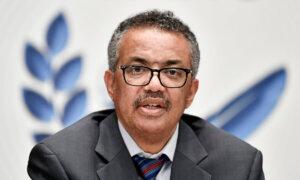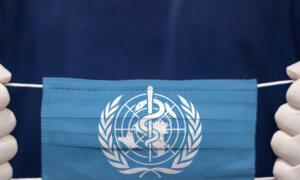It is estimated that the new strategy will cost around $30 billion a year and has already secured a 50-nation partnership.
The Biden administration is launching a new international strategy called the “Global Health Security Strategy” on April 16 to combat the next global pandemic, according to senior administration officials.
Building on the lessons learned during the COVID-19 pandemic, a senior administration official said this new strategy has already secured a 50-nation partnership, with the possibility of reaching 100 by the end of the year with the help of the other G7 nations. It is estimated that it will cost around $30 billion a year.
“The United States, together with its international partners, will enhance the prevention, detection, preparation for, and response to infectious disease threats, whether naturally occurring, accidental, or deliberate in origin, across sectors at home and abroad in order for our collective efforts to be more efficient, effective, sustainable, and equitable,” the strategy statement reads.
The strategy sets the course for the United States’ actions over the next five years, President Joe Biden said in a statement. It builds on the administration’s work over the past three years, including the Pandemic Fund, which created an international body that raised $2 billion from 27 different contributors. The contributors included countries, foundations, and philanthropies.
The strategy has three goals: to strengthen health security through bilateral partnerships with other nations, to catalyze political commitment and financing necessary to achieve global health security, and to maximize the impact of U.S. government investments in health security and complementary programs.
A senior administration official stated that each participating nation had several gaps in its “capacity to prevent attacks or respond to biological threats,” which need to be addressed to achieve these goals. Those gaps, the official said, ranged from lab capacity to surveillance and preparedness to communicate information about an outbreak.
The administration is also launching a special website on April 16 to support the strategy. It will reveal the 50 countries that the United States is already supporting through the strategy and highlight where the need for progress is most evident. Users will be able to easily see where U.S. investments are being made to help close these gaps.
The senior administration official said that the countries were selected for various reasons, including the need to have a U.S. presence in the nation, political will, and political partnerships already established. Most of the bilateral support will go through the United States Agency for International Development and the Centers for Disease Control and Prevention.
The senior administration official emphasized that economic security is tied to health security by mitigating the impact of a global health crisis on trade and travel, as COVID-19 demonstrated.
The official also clarified that this strategy is separate from the World Health Organization’s pandemic treaty currently being negotiated and said that the administration sees those negotiations as a way to advance the same objectives of advancing global health security.
Original News Source Link – Epoch Times
Running For Office? Conservative Campaign Consulting – Election Day Strategies!


